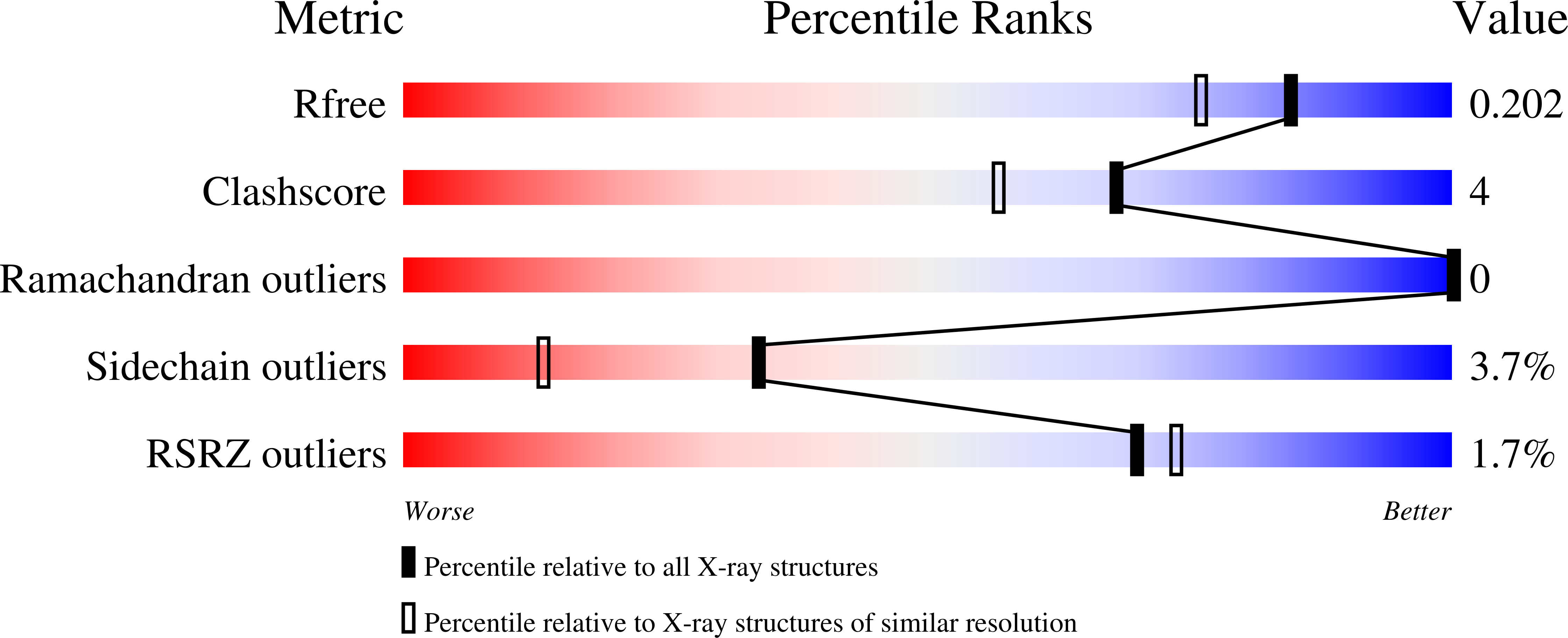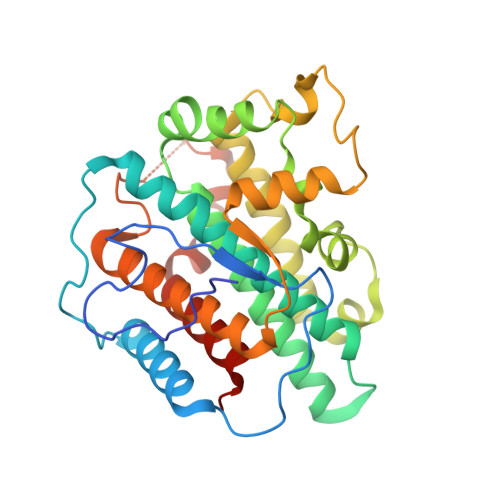Molecular Rationale for Partitioning between C-H and C-F Bond Activation in Heme-Dependent Tyrosine Hydroxylase.
Wang, Y., Davis, I., Shin, I., Xu, H., Liu, A.(2021) J Am Chem Soc 143: 4680-4693
- PubMed: 33734681
- DOI: https://doi.org/10.1021/jacs.1c00175
- Primary Citation of Related Structures:
7KQR, 7KQS, 7KQT, 7KQU - PubMed Abstract:
The heme-dependent l-tyrosine hydroxylases (TyrHs) in natural product biosynthesis constitute a new enzyme family in contrast to the nonheme iron enzymes for DOPA production. A representative TyrH exhibits dual reactivity of C-H and C-F bond cleavage when challenged with 3-fluoro-l-tyrosine (3-F-Tyr) as a substrate. However, little is known about how the enzyme mediates two distinct reactions. Herein, a new TyrH from the thermophilic bacterium Streptomyces sclerotialus (SsTyrH) was functionally and structurally characterized. A de novo crystal structure of the enzyme-substrate complex at 1.89-? resolution provides the first comprehensive structural study of this hydroxylase. The binding conformation of l-tyrosine indicates that C-H bond hydroxylation is initiated by electron transfer. Mutagenesis studies confirmed that an active site histidine, His88, participates in catalysis. We also obtained a 1.68-? resolution crystal structure in complex with the monofluorinated substrate, 3-F-Tyr, which shows one binding conformation but two orientations of the fluorine atom with a ratio of 7:3, revealing that the primary factor of product distribution is the substrate orientation. During in crystallo reaction, a ferric-hydroperoxo intermediate (compound 0, Fe 3+ -OOH) was observed with 3-F-Tyr as a substrate based on characteristic spectroscopic features. We determined the crystal structure of this compound 0-type intermediate and refined it to 1.58-? resolution. Collectively, this study provided the first molecular details of the heme-dependent TyrH and determined the primary factor that dictates the partitioning between the dual reactivities of C-H and C-F bond activation.
Organizational Affiliation:
Department of Chemistry, The University of Texas at San Antonio, One UTSA Circle, Texas 78249, United States.




















